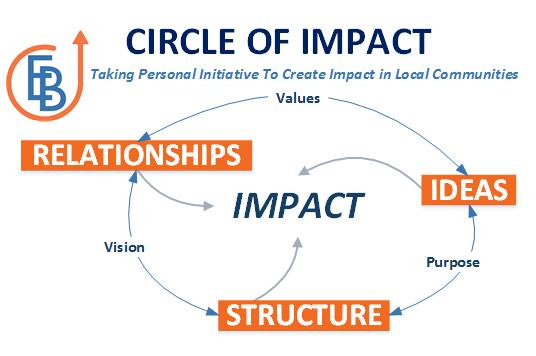Discovering Generational Memory
The Time and Reality Series
My grandfather attending a church gathering, Asheville, N.C. 1916
A Generational Memory Framework
Generational memory can be discovered like any dynamic situation through the application of my leadership model, the Circle of Impact.
Think about your family history or your work history. You will find that there are ideas that stand out in the conversations that each generation has within those social structures.
One of my projects two decades ago, I was hired by the new CEO of the company to help them write a values statement. During my first meeting with the team that was assigned to write the statement, I asked them,
“How far back in time do you to go to when this was a happy company?”
The union president immediately said,
“Twenty years.”
I asked, “What was it like back then?”
“We were a family. Everyone knew each other. We did things together. We knew each other’s families and kids.
“What happened?”
“A new executive team took control. They made all the decisions.”
“The experience of family, of togetherness was lost.”
“Correct!”
The pain of twenty years of being unable to take initiative to do their jobs was a generational memory that stood in contrast to the generational memory of the company as family.
The moment the team’s new values statement was endorsed by the CEO was turning point in the company’s history. A training program was implemented based on the new values statement. Two years later, the company was recognized as one of the most trustworthy companies in the nation.
Can you see why our memories are important? It is not just to remember moments in time. They are also ways of understanding what we want and don’t want. The Circle of Impact model of leadership is useful in this way.
In this post, I want to show you how you can gain greater benefit from capture a clear sense of your generational memories.
Here’s my working definition of Generational Memory.
“Generational Memory is a remembrance of the Past that serves to clarify and define its relationship to the Present and the Future.”
How the Circle of Impact Reflects Generational Memory
We look at generational memories through the lens of the Circle of Impact model of. leadership.
It is based upon the relationship or alignment of the three dimensions of leadership: Ideas, Relationships, and Structure.
The Circle of Impact emerged from seeing Patterns of Behavior in my interactions with people and their organizations.
In the context of Generational Memory, here is how we understand the three dimensions:
Ideas, like values, rituals, ways of defining purpose, and the stories that describe the history of the group.
Relationships, as those who made a difference in our lives in past, or how respect or disrespect defined relationships within the social circle or how a group of people came together to create an institution that today stills carries for the mission of the organization.
Structures that are both organizational and social, where the organization established in the past still represents the community as the foundation of it.
The model focuses on Impact as the measure of leadership.
Impact is a change that makes a difference that matters.
We want to identify how our memories make a difference that matters.
Even as we seek to understand our generational memories, we are creating generational memories for Future generations. This is how the Continuity of Time serves us.
I know you are wondering, “What does this have to do with generational memory?”
Ask yourself:
Why do my memories of my family matter to me?
Is it some idea that was inspirational or instructive?
Is it the trust that I was given during a hard time?
Is it that the structure of our family was strong because we had gone through hard times, and held together through it?
Each of those memories bring awareness of both positive and challenging situations. This is where applying the Circle of Impact can make a difference in the situation.
I know that in almost every family and every business there is a point in time where interpersonal conflict could have destroyed things. But they didn’t. Someone or some group joined together to ensure survival. The remembrance of that moment in the Past becomes an anchor for believing that a similar situation can be achieved in the Present.
Let me show you what I learned and came to develop as a result of what I was seeing.
Subscribe to see How to Understand your Generational Memories
The sections below are:
A Work Culture of Values and Respectful Relationships
Three Structures that Influence our Generational Memories
Two Global Forces: Centralization-Decentralization, Global-Local and Institutional-Communal
Center and Periphery’s Transition
A Point of Clarification
Networks of Relationships
Strategies for Generational Memory: Ideas, Relationships, Structure



